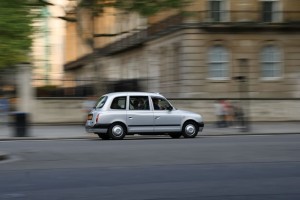Many individuals who enter into the career of a taxi driver are already highly experienced drivers. This experience does of course help with passing the taxi test.
The knowledge gained with years of driving is invaluable, but with that, often comes bad habits. Most councils now require that an individual passes a taxi driving assessment test set out by the Driver and Vehicle Standards Agency (DVSA) before being issued a licence for private hire or hackney carriage. Examiners who conduct the taxi test are aware that you may be an experienced driver and so expect you to drive like one.
Roughly around 50% of taxi tests are failed each year and more often than not, it is these bad driving habits that have crept in over the years that account for many taxi test failures.
A taxi driving lesson conducted by a qualified driving instructor will provide professional pre-taxi test training, but you can also brush up on your driving skills and start eliminating those bad habits by following the taxi test tips below. Use the tips outlined below along with the tutorials to amend bad driving habits and continue to drive to a high standard at all times. Listed below are the most common reasons for failing a taxi test along with tips for avoiding these faults during your test.

Moving Off
The number 1 reason for taxi test failures is for moving off, which typically involves a lack of effective observation and moving off safely. As with the standard learner test, you must always check the blind spot before moving off and only do so where there is a sufficient gap in the traffic so that you do not impede other vehicles in any way. For further information on the blind spot and how to correctly check it, see:
Junctions
Next we see junctions. Correct road position is essential as is effective observation. A lack of effective observation is the big failure here. Ensure you slow the vehicle sufficiently so to allow you plenty of time to observe roads you are entering and necessary mirrors. For further information on the correct method for taking junctions and left / right turns, see:
Taxi Manoeuvres
During the taxi test, you’ll be required to demonstrate to the examiner a manoeuvre. Any one of the following manoeuvres may be requested:
Manoeuvres are used during the standard learner test and the taxi test to determine if the test candidate has a good level of control and observational safety awareness. The same techniques used for the learner driver tutorials above can be used for the taxi test, the only difference being that as an experienced driver, the examiner will expect the manoeuvres to be completed a little faster. Most taxi tests are failed due to a lack of appropriate observation and acting upon what you observe during a manoeuvre. Always look in the direction you intend on moving, before moving the vehicle.
Use of Mirrors
Incorrect use of mirrors fails a considerable amount of taxi tests. Taxi test training focuses to a large extent on this technique. Main areas of concern are inappropriate or failing to use mirrors for a:
- Change of speed – mirrors must be checked before slowing down or speeding up the vehicle.
- Signalling – mirrors must be checked before applying a signal. Adopt the MSM (mirror, signal, manoeuvre) driving routine.
- Change of direction – mirrors must be checked before changing direction. Again, the MSM routine should apply for left and right turns and junctions.
For further information on how to correctly use the mirrors during a taxi driving test, see:
Correct Use of Speed
Driving too fast during a taxi test can obviously lead to test failure whether exceeding the speed limit or driving too fast for the conditions. It’s equally important that you do not drive unnecessarily slow. Many test candidates drive too slowly due to them being on a test. It’s important however that you drive as though you are taking a paying passenger and to get them to the location as quickly as possible, but within the speed limit and at an appropriate speed for the conditions.
Road Positioning
Incorrect road positioning is a typical area where bad habits creep in with experienced drivers and where training for the taxi test is often needed. Road positioning comes in many forms from vehicle positions based on ideal circumstances and vehicle positions based on unexpected circumstances. The examiner will be looking for appropriate, safe positioning based on any given situation and where you’ll be marked no differently than a candidate on a standard learner test. Road positioning will typically affect the outcome of your test in areas such as:
- Junctions
- Left and right turns
- Road positioning in general driving
- Cyclists and giving them enough space
- Passing parked cars
The learner driver tutorials above will serve as a refresher to hopefully eliminate any bad habits acquired over the years. A safe and appropriate road position should also be used when stopping behind other vehicles in traffic. Experienced drivers can have a tendency to stop too close to other vehicles. For an idea on how far you need to stop behind other vehicles, see:
- Stopping in traffic and using the tyres and tarmac rule
Emergency Stop
The emergency stop or controlled stop exercise is a relatively easy procedure that requires the driver to stop the vehicle as though there is an emergency. Taxi tests are often failed during this exercise however due to a lack of control of the vehicle. It’s important that when the signal to stop is given by the examiner, the brakes are applied quickly and firmly, but not to apply the brake pedal so hard that it may cause a loss of control. For further information on the correct method for this exercise, see:
